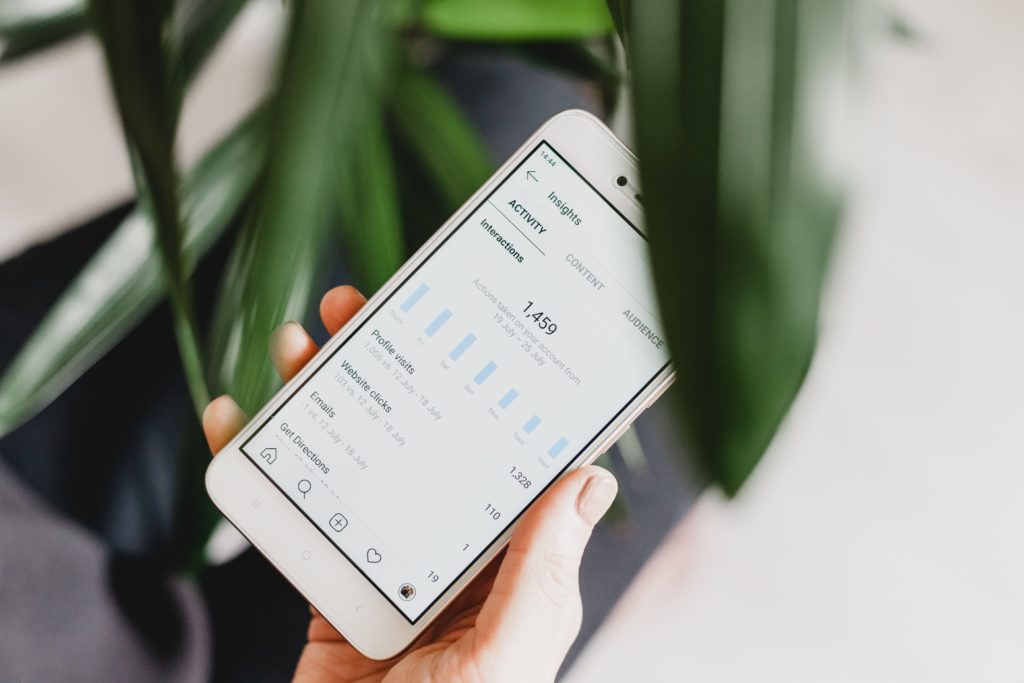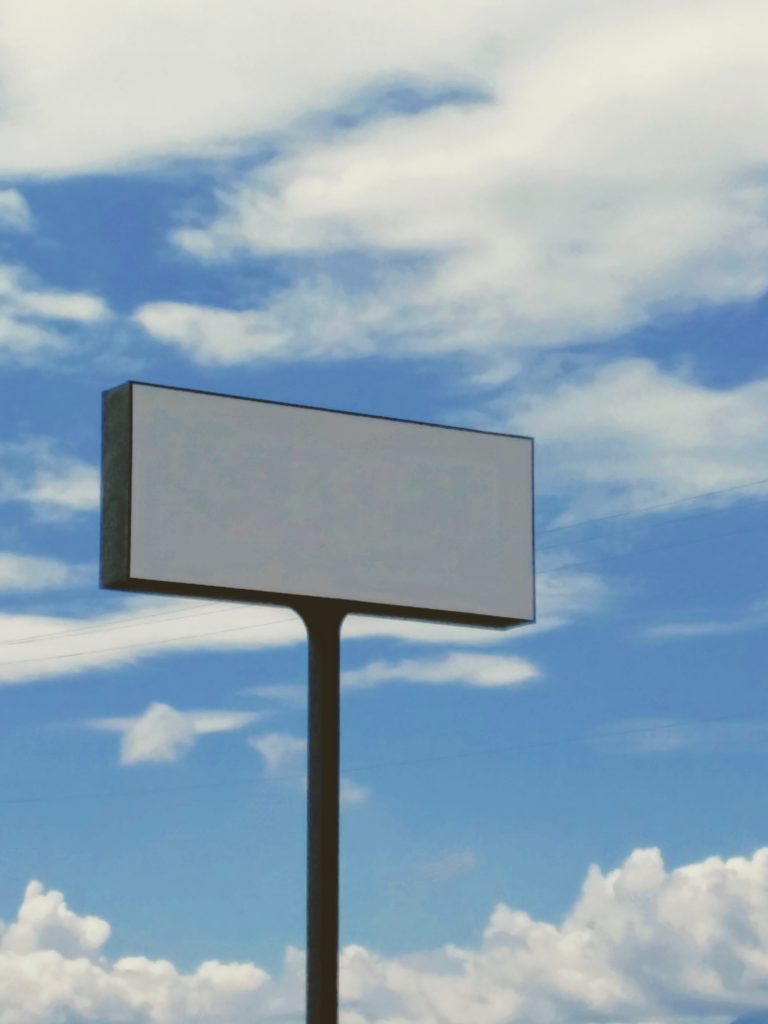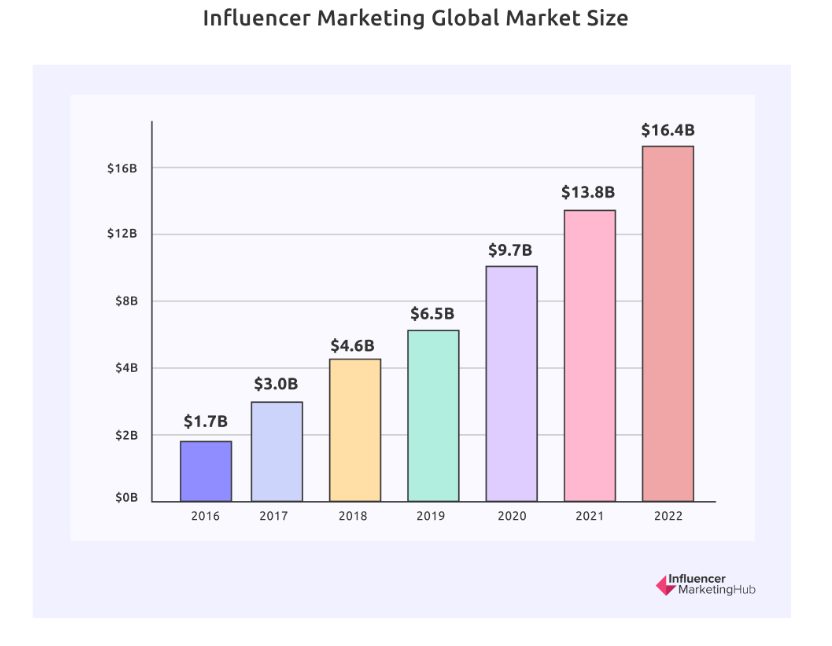Table of Contents
We are seeing companies move away from traditional advertisements and flow in the direction of partnering with content creators and influencers as they strive to increase awareness of their brand and product. Why are we seeing them place more of their marketing and advertising budget in this sphere? Does this strategy garner more reach for the brands? Are the campaigns more successful? Let’s investigate and see why brands are transitioning to move their budgeted dollars away from traditional ad campaigns and towards creator budgets.
“We are into a period wholly different from the past era of factory-based mass production of material items. When we talk of money, prices, returns on investment, laws of supply and demand, and so on it all made excellent sense. We now have to think in wholly new economic terms, for we are entering an entirely new kind of economy. The old concepts will just not have value in that new context.”
Former theoretical physicist Michael Goldhaber presented this claim at a conference on the “Economics of Digital Information” in 1997.
In his theory and presentation, Goldhaber posits that we were moving away from a material-based society and moving toward an attention-based society. As he put it, even the President of the United States was willing to discuss his underwear on nationwide television!
In other words, he predicted that the world would change to value relatability, authenticity, and relationships over almost anything.
Enter the Creator Economy
Fast forward twenty-five years after Goldhaber released his theory and we find that this has come true. Creators have dominated the internet and connected with millions of consumers. When early internet users would read content on the web, their experience was slow, text-based, and curated by professionals who put information in front of them with a fabricated and corporate tone.
That all started to change in the early 2000s with the creation of Myspace, Facebook, and YouTube. Little did they know they were about to change the landscape of the internet. These platforms initially documented interactions of our social circles; you could update your friends on your weekend plans or relationship status, document your summer vacations, and maybe share some how-to videos.
Before we knew it Facebook was launching an advertising model, YouTube followed, and social media was more than a place to just connect with your offline pals – it became an industry. Smartphones became the standard, allowing everyone access to social media where creators began to build followings by connecting with others outside of their friend group. Now, in addition to those early pioneering platforms, we have Instagram, Twitch, TikTok, and many other places to find connections (and yes, advertisements).
Photo by Georgia de Lotz on Unsplash
Content Creators bring consumers a world that is very much personal as they extend a rounded and authentic view of who they are and why they are sharing their perspectives and lives. And what’s more, they build relationships within their communities. They listen, interact, and enrich the consumer’s own life.
This dynamic version of the information age has changed everything. Attention now goes both ways, from the person on the internet to the consumer and back.
Want more to read on creators as brand ambassadors? Check out this blog.
What do consumers think of traditional advertising?
Well, let’s look at some numbers. In a survey conducted by Vision Direct, the average American spends an equivalent of 44 years on a screen (phone, television, computer, really any screen you can think of). That is a big number, to say the least – 382,652+ hours – and that might be even greater if they were to further segregate and measure only younger generations like Millennials and Gen Z.
We know consumers must see tons of ads in that amount of time, but what kind of impressions do they form? In a recent report by Whaler called “Reaching the Unreachables”, participants noted that when presented with on-screen ads, over 60% of consumers find them to be disruptive and regularly take measures to block and avoid them.
Almost 40% of users not only state that ads are disruptive, but they also have security concerns. It is a common belief that ads are not quality controlled by the website host and can cause viruses and malware to be transferred. One notable instance of this happened a few years back when a user disabled their ad blocking software to view a page on Forbes.com and ended up receiving malware from the ads on the site.
Furthermore, 66% of users completely skip ads without even looking at them, with a large portion of these people installing ad-blockers and never interacting in communities where ads exist. This is an understandable sentiment when a pop-up ad or an auto-played video ad stands between the consumer and the content they are trying to see.
Ad-free communities are growing
Photo by Joshua Hoehne on Unsplash
For as long as many of us can remember we have been consumers-in-training. Through years and years of spending, brands have marketed to us telling us what products we need to purchase in order to fit in with others, trained us to have certain reactions to products, and instructed us that the way to success is through, you guessed it, buying more products.
New generations are over it. Millennials and especially Gen Z (the youngest generation of consumers) have been exposed to this their entire lives and have become particularly adept at detecting it, avoiding it, and blocking it. Research has shown that consumers are more and more commonly paying for services to experience ad-free environments, such as streaming video services, ad-free music and podcast platforms, online communities with non-advertising rules, and so on.
Looking to run an epic influencer marketing campaign using your creator budgets? NeoReach has the best experience in creating viral campaigns that convert on social media. Sign up here!
How do Content Creators avoid this experience?
There are three main reasons that content creator advertisements avoid feeling intrusive.:
1. Creators can present the product organically.
Instead of a user’s experience being interrupted by an ad popping up in front of them or being pulled away from the content they are viewing to be forced into watching a 30-second clip that is unrelated to the content, they are instead presented with the product that is perfectly in line with the content they are watching.
Imagine watching your favorite fitness influencer show you how they plan their meals and take a second to tell you about what protein shake they prefer to use and how you can get an exclusive deal. Compare that with a frustrated and resentful consumer sitting through an insurance ad in order to get back to their now interrupted meal planning video.
2. Creators have built trust with the viewer.
If a friend tells you that you should consider purchasing a new tool that has helped them complete a task better and more easily, you’re more likely to investigate getting one for yourself than if a company you’ve never heard of tells you the same thing.
The relationship that the creator has already cultivated allows the viewer to feel like they are being advised by a friend, rather than feeling a sense of manipulation and forced to look at something just because they were in the wrong place at the wrong time.
3. Creators have a purpose felt by their followers.
When people see an ad from a large company they often feel used. Brands promise luxury, comfort, or entertainment, but it isn’t hard for the consumer to see through the lightly veiled promise and realize what they are really doing is helping that company get rich.
When you are a part of a content creator’s family you feel like you are a part of their mission. They have a targeted community of like-minded followers. Maybe they are trying to help you learn about entrepreneurship, or maybe they are raising awareness for a cause that you also care about. But you rarely feel like a cog in a system that is trying to make that creator rich. Because of this sense of communal purpose, consumers are happy to support their favorite creators when the opportunity presents itself.
This is how the new generations of consumers want to be marketed to. We have seen in research that 58% of Americans approve of personalized and relatable ads, with a Gen Z approval rate of 81%.
What we are seeing from companies and brands
The creator economy has been growing and flourishing for well over a decade. During the last two years, we have seen the global size of the influencer market achieve new highs. Already an enormous industry valued at $1.7 billion in 2016, four years later it had reached a remarkable $9.7 billion, followed by $13.8 billion in 2021. Now, the content creator and influencer market is projected to reach $16.4 billion in 2022.
Via IMH
And it isn’t slowing down anytime soon:
- 66% of brands surveyed reported spending more on creator marketing in the last year
- 52% of brands said they have been expanding their creator marketing teams
- 58% of brands ranked creator discovery and creator retention among their top three most important aspects of their earned media programs.
Looking into the next year, positive sentiment continues to grow. In the 2022 benchmark report published by Influencer Marketing, 75% of brand marketers plan to dedicate more of their budget to creator budgets and influencer campaigns.
In this same report, there is an estimated 9% year-over-year impact by ad blocking tools used by consumers, showing that the global ad blocking rate is above 43%. This makes it even more critical for companies and brands to partner with influencers in their digital ad budgets and strategies.
Marketing in our culture
Although creator marketing is widely customizable, there are three main challenges that every brand faces:
- creating content to keep up with our ever-changing society
- personalizing that content for their ideal customer
- getting THAT content to THAT customer
Our culture has the ability to change faster than we can digest it. The speed at which information can be shared and the amount of people that information can touch has reached new levels. Combine that reality with the rate of new technology being introduced, the increase in participation from younger generations, and society’s willingness and desire to break traditions and include all types of people, and the cumulative effect results in rapid culture change.
TikTok plays a huge role in today’s online culture. Read our 2022 landscape report on TikTok influencers here.
How can brands possibly keep up?
The answer? Brand and creator partnerships.
Content creators are extremely skilled at doing just that: creating content. And because they focus on serving only their community and keeping in tune with their audience, they do not struggle to keep up with evolving culture and trends within the niche they operate.
View this post on Instagram
Flowing more of a brand’s ad dollars into content creator budgets and marketing is a win for everyone involved. This results in a brand’s message being delivered to their target audience via the consumer’s most trusted source organically and confidently. The alternative is for brands to compete with an influencer for the consumer’s attention. However, as research has shown time and time again, new generations of consumers will almost always choose to give their attention to advertisements delivered in a personal way and within an environment where they have already chosen to receive content, i.e., the influencer.
The fact is, traditional advertising in today’s internet culture may just be a wasted effort. Today’s society has developed such a strong aptitude for detecting and avoiding non-personal ads that the reach of traditional campaigns gets slimmer and slimmer.
Some of the many advantages brands will experience when partnering with creatives are:
- Creators can personalize and tailor the message for their target audience.
- Creators reach a higher percentage of Millennials and Gen Z consumers who will be the primary spenders over the next few decades.
- Increased opportunities for product placement within the organic environments of a creator’s social media pages.
- Higher conversion rates through an established relationship between the creator and consumer.
- Growth of brand trust through co-branding a company’s name and products with an influencer.
Here is the next read on why you need influencers in your paid media marketing strategy
Conclusion
As brands turn away from the less effective traditional marketing tactics and look to get involved in the creator economy, they can reap benefits from the relationships and the audiences that creators have already cultivated. But they must always work to be honest and align themselves and their brands in the right spaces where they can bring true value to the conversation happening within that community.
The brands that have been mentioned the most on Instagram have done this hundreds of thousands of times, with an estimated reach in the billions. This happens when influencers and content creator communities get involved on a large scale.
This has become and is becoming more so the most effective marketing strategy on the planet. We are seeing numbers as high as 93% of marketers investing in creator budgets and influencer marketing at least once.
No matter what industry you’re in, or what scale you operate on, you can no longer go without a line on your marketing budget for content creator partnerships.


























